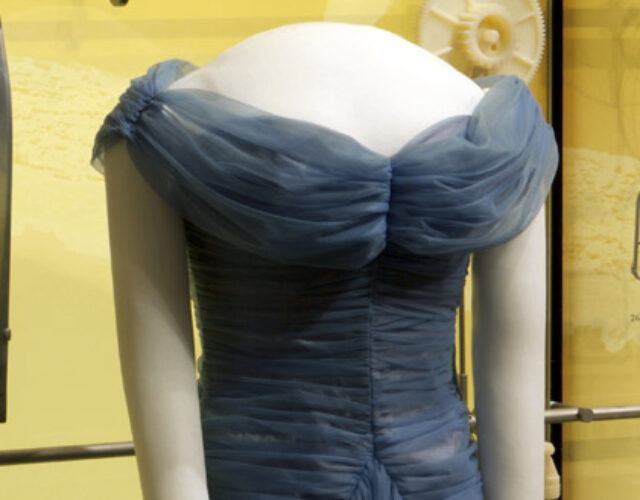The wealth of many a Chinese emperor was built on the backs of silkworms. The silk they produced became a luxury sought throughout the ancient world as Chinese traders established the routes that would become known as the Silk Road. Silk symbolized wealth and status, and owning a silk dress was beyond the means of most women throughout history. But in the 1930s chemists gave women the next best thing—synthetic silk—and it sparked a fashion revolution.
In the early 1930s a group at DuPont’s Experimental Station was researching polyamides, a type of polymer consisting of repeated amine groups, of which silk is a natural variety. The team produced a polyamide that was strong enough to make a fiber, and in 1938 DuPont gave the new fiber a name: nylon. Like silk, nylon is both flexible and strong. It retains its shape and doesn’t sag, an improvement over the viscose rayon that was one of the main silk alternatives then available. And nylon was not highly flammable, unlike its other main competitor, the nitrocellulose-based “Chardonnet silk.”
By the end of the 1930s mechanical silkworms were spinning out nylon at a speed no larvae could match. Initially nylon was used almost exclusively for stockings, and it caused a sensation in women’s hosiery—never mind that these early stockings cost at least as much as their silk equivalents and often more. Marketers claimed nylon hosiery would not run, and women raced to the stores to replace their silk with nylon in such quantities that the word nylon became virtually interchangeable with the word stocking.
By 1942 all production at DuPont’s two nylon factories was diverted to military use. Instead of stockings the factories provided ropes, mosquito netting, and parachutes. When the war ended, nylon returned to the fashion market. Along with its siblings Dacron and Lycra, nylon was introduced as fabric for blouses, dresses, gloves, and scarves. These synthetics offered designers new options when rising cotton prices intersected with dwindling supplies in the 1950s.
The low cost of these synthetic materials made following fashion an affordable pursuit for many. Advertisers specifically targeted young people, and dresses like the one shown here turned teenagers into the leaders of the mass-market fashion revolution of the 1950s. Nylon also helped create the classic 1950s women’s silhouette, with a bodice shaped by nylon corsets and a generous skirt whose silk equivalent would have been prohibitively expensive for most. Advertisements featured beautiful models and popular movie and television stars to sell this new look.
Nylon was the first of many synthetics that would come to dominate the clothing industry. By the mid-1950s even high-end designers were using nylon and other synthetic fibers. These materials remained in vogue until trends turned toward natural fabrics at the end of the 1970s. Still, the mechanical silkworm spins on. Chemists continue to use the lab to create more and more advanced fabrics. Today’s chemical clothing includes everything from the Kevlar used for body armor to polyesters that repel ultraviolet rays.




